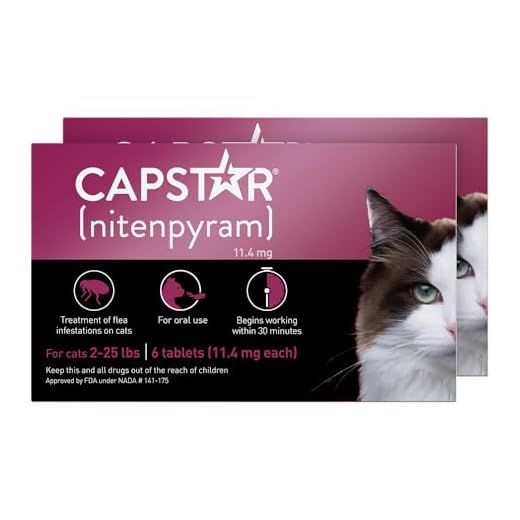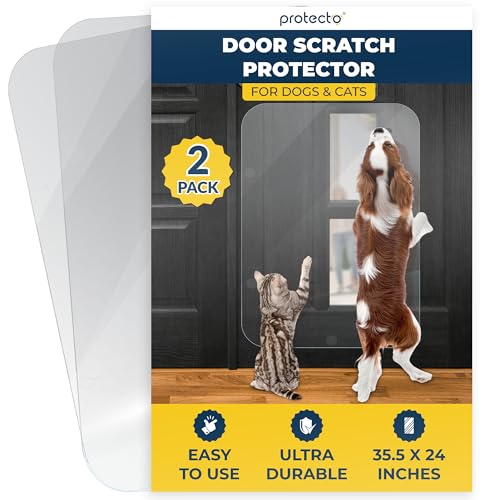



If you’re looking to keep your furry companion free from unwanted pests, there are several excellent options available without a prescription. This article outlines the most effective treatments that can help alleviate the discomfort caused by these intruders. Understanding which products work best can save you time and ensure your cat stays healthy and happy.
The information provided here is particularly valuable for cat owners who want to manage infestations at home without the need for veterinary visits. You’ll find detailed descriptions of various solutions, including their active ingredients, application methods, and any precautions to be aware of. By the end of this article, you’ll have a clear understanding of how to choose the right product for your pet.
In this guide, we cover a variety of options, from topical solutions to oral treatments. Each section highlights the pros and cons, along with user experiences and recommendations, helping you make an informed decision. With the right knowledge, you can protect your cat from discomfort and ensure a pest-free environment.
Best OTC Flea Treatments for Cats
For effective control of unwanted parasites, a variety of over-the-counter solutions are available. These options include topical treatments, oral medications, and environmental sprays that cater to different needs and preferences.
Topical applications are often favored due to their ease of use and swift action. They typically offer month-long protection and work by disrupting the life cycle of the insects. Oral treatments, on the other hand, provide a systemic approach and can be particularly effective for rapid eradication of infestations. Environmental treatments help eliminate eggs and larvae in the home, reducing the chances of re-infestation.
Considerations for Choosing Treatments
When selecting a product, consider the following:
- Age and Weight: Ensure the product is suitable for your pet’s age and weight to avoid adverse effects.
- Application Method: Choose a method that you find convenient, whether it’s a spot-on treatment or a chewable tablet.
- Duration of Action: Some products provide longer-lasting effects than others, so consider how frequently you want to reapply.
- Safety: Check for any potential side effects and ensure the product is safe for other pets in the household.
Regularly consulting with a veterinarian can provide personalized recommendations based on your cat’s health and living environment.
Spot-On Treatments for Effective Pest Control
Spot-on applications represent a reliable method to combat unwanted parasites. These products deliver active ingredients directly onto the skin, ensuring targeted action against infestations.
Utilizing these treatments involves applying a specific dosage at the nape of the neck, allowing the solution to spread across the skin’s surface through natural oils. This method not only provides immediate relief but also establishes a protective barrier against future invasions.
Key Benefits
- Ease of Use: Simple application process without the need for pills or sprays.
- Long-Lasting Protection: Many formulations offer several weeks of defense against reinfestation.
- Targeted Action: Direct application minimizes the risk of exposure to other pets and humans.
Application Guidelines
- Ensure the animal’s coat is dry and clean before application.
- Part the fur at the application site to expose the skin.
- Administer the product according to the instructions provided on the packaging.
Safety Considerations
| Precaution | Description |
|---|---|
| Age Restrictions | Verify if the product is suitable for younger animals. |
| Allergic Reactions | Monitor for any signs of irritation or allergic responses post-application. |
| Concurrent Use | Avoid combining with other treatments unless specified. |
Regularly check for signs of infestation, such as excessive scratching or hair loss. Consistent monitoring will help maintain a pest-free environment.
Oral Medications: Fast-Acting Solutions for Flea Infestations
Oral treatments offer rapid relief from unwanted parasites, ensuring your feline friend experiences comfort quickly. These solutions work by entering the bloodstream, targeting adult insects directly and providing prompt results.
Many oral formulations are designed to eliminate parasites within hours, often providing protection for an extended period. This method is particularly beneficial for cats who may be sensitive to topical applications or for those who are prone to licking off treatments.
Benefits of Oral Solutions
- Rapid Action: Many of these treatments begin to work within 30 minutes to a few hours, helping to alleviate discomfort swiftly.
- Convenience: Administering a pill can be easier for some pet owners compared to applying topical solutions, particularly for cats that are resistant to handling.
- Long-Lasting Protection: Some oral options provide prolonged defense against re-infestation, reducing the frequency of treatment needed.
When selecting an oral remedy, consider consulting a veterinarian to ensure the chosen product is suitable for your pet’s age, weight, and health status. A professional can also guide you on the proper dosage and administration techniques.
Monitoring your cat after administering any treatment is crucial. Watch for any adverse reactions and ensure your pet remains comfortable during the process. Regularly checking for signs of remaining parasites can help you determine the effectiveness of the chosen solution.
Shampoos and Rinses: A Bath for Flea Relief
Using specialized shampoos and rinses can provide immediate comfort for your feline companion suffering from unwanted pests. These products often contain ingredients that kill or repel parasites, offering a quick solution to alleviate itching and irritation.
When selecting a cleansing solution, consider those specifically formulated for animals. Look for natural ingredients that are safe and gentle, ensuring they won’t harm your pet’s skin or coat. Regular bathing with these products can help manage and reduce the presence of insects.
Application Tips
To maximize the effectiveness of the shampoo or rinse, follow these guidelines:
- Wet the coat thoroughly before applying the product.
- Massage the shampoo into the fur, ensuring it reaches the skin.
- Leave the product on for the recommended time, usually a few minutes, to allow active ingredients to work.
- Rinse thoroughly to remove all residues, which can cause further irritation if left behind.
- Dry the cat gently with a towel, avoiding strong heat sources.
After bathing, monitor your pet for any signs of irritation or allergic reactions. If any adverse responses occur, discontinue use immediately and consult a veterinarian. Regular baths can be part of a broader strategy to keep your pet free from infestations.
Natural Remedies: Safe Alternatives for Sensitive Cats
Essential oils such as lavender and cedarwood can act as natural repellents. Dilute them properly before use, as concentrated oils may irritate sensitive skin. Always perform a patch test to ensure your feline companion does not have an adverse reaction.
Herbal solutions like neem oil and diatomaceous earth offer additional options for managing pests. Neem oil can be diluted in a carrier oil and applied to the fur, while diatomaceous earth can be sprinkled in areas where your pet spends time, creating a barrier against unwanted insects.
Recommendations for Natural Treatment
- Lavender Oil: Use in diluted form to repel insects.
- Cedarwood Oil: Known for its insect-repelling properties; dilute before application.
- Neem Oil: Apply diluted to fur; effective against various pests.
- Diatomaceous Earth: Sprinkle in living areas to deter insects.
Always consult a veterinarian before introducing any new remedies to ensure safety and appropriateness for your specific pet. Monitoring your feline’s reaction to these alternatives is essential, as individual sensitivities vary.
Best otc flea meds for cats
Features
| Part Number | 86336774 |
| Model | 86336774 |
| Color | Large Cat only |
| Release Date | 2023-05-29T00:00:01Z |
| Size | 6-Pack |
| Language | English |
Features
| Part Number | 3137 |
| Model | 3137 |
| Warranty | Contact the manufacturer. |
| Color | Pink |
| Size | 12 Count |
Features
| Part Number | BG101 91 |
| Model | BG1011 91 |
| Color | White |
| Size | 1-Gallon |
Features
| Part Number | 86336855 |
| Model | 86336855 |
| Color | Small Cat only |
| Is Adult Product | |
| Release Date | 2023-05-29T00:00:01Z |
| Size | 4 Pack |
Video:
FAQ:
What are the most common types of over-the-counter flea medications for cats?
Over-the-counter flea medications for cats typically include topical treatments, oral tablets, and flea collars. Topical treatments, such as spot-on solutions, are applied directly to the cat’s skin and usually provide long-lasting protection. Oral tablets, which can be given to cats as a treat or mixed with food, work systemically to kill fleas. Flea collars are worn around the cat’s neck and release chemicals that repel or kill fleas over time. Each type has its own advantages, and the best choice depends on your cat’s specific needs and lifestyle.
How do I know if an OTC flea medication is safe for my cat?
To determine if an over-the-counter flea medication is safe for your cat, check the product label for specific information regarding age, weight, and health conditions. Many products are designed for adult cats, while some may also be safe for kittens. It’s also wise to consult your veterinarian, especially if your cat has any pre-existing health issues or is on other medications. Additionally, look for products that have been approved by veterinary associations or regulatory bodies, as these will typically have undergone safety evaluations.
How do I apply topical flea treatments correctly?
Applying topical flea treatments requires careful attention to ensure effectiveness and safety. First, choose a location on your cat’s back, usually between the shoulder blades, where they cannot easily reach. Part the fur to expose the skin and apply the solution directly onto the skin, following the dosage instructions provided on the package. Avoid getting the product on your hands; use gloves if necessary. After application, keep your cat indoors for a period specified by the product to ensure it works effectively. Monitor your cat for any adverse reactions, and consult your vet if you notice anything unusual.
What should I do if my cat has a severe flea infestation?
If your cat has a severe flea infestation, it’s important to act quickly. Begin by treating your cat with an appropriate flea medication, preferably one recommended by your veterinarian. In addition to treating your cat, you’ll also need to address your home environment. Vacuum carpets, rugs, and furniture thoroughly to remove flea eggs and larvae. Wash your cat’s bedding and any fabric items they frequently come into contact with in hot water. Consider using flea sprays or foggers designed for indoor use to eliminate fleas in your home. Regularly check your cat for fleas and reapply treatments as advised to prevent future infestations.








